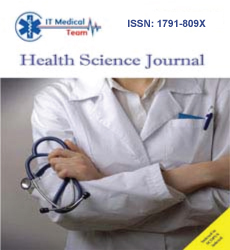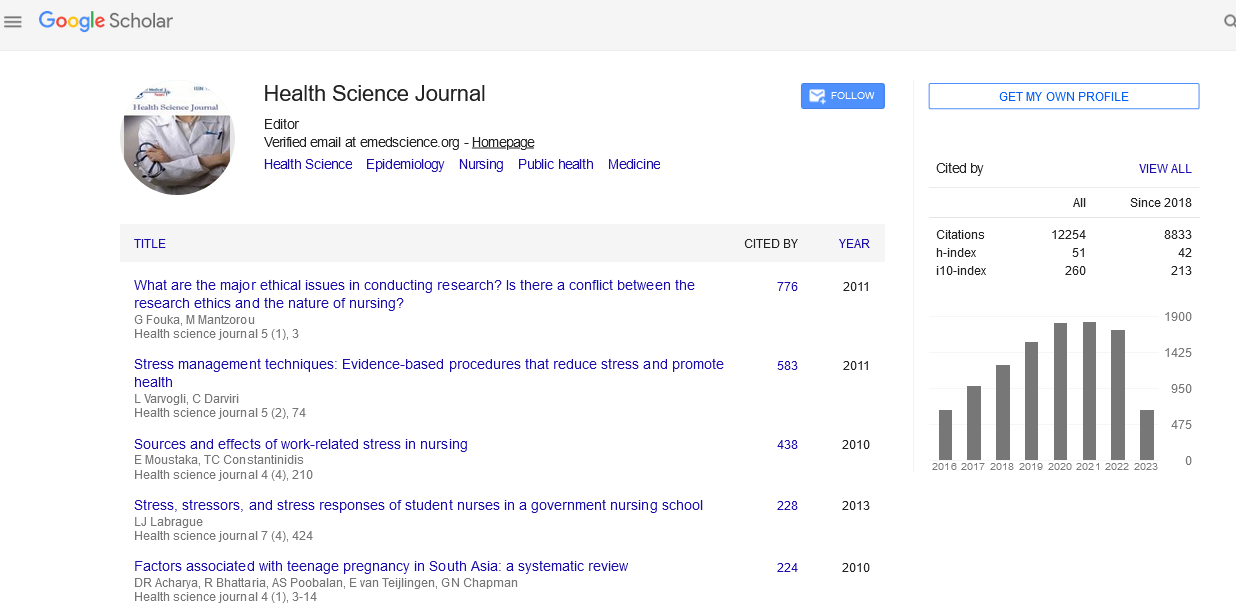Editorial - (2024) Volume 18, Issue 12
Herbal Interactions with Commonly Prescribed Pharmaceuticals
Takao Hoshino*
Department of Health, Columbia University, USA
*Correspondence:
Takao Hoshino, Department of Health, Columbia University,
USA,
Email:
Received: 01-Dec-2024, Manuscript No. Iphsj-24-15453;
Editor assigned: 04-Dec-2024, Pre QC No. Iphsj-24-15453 (PQ);
Reviewed: 26-Dec-2024, QC No. Iphsj-24-15453;
Revised: 28-Dec-2024, Manuscript No. Iphsj-24-15453 (R);
Published:
31-Dec-2024, DOI: 10.36648/1791-809X.18.12.1214
Abstract
The use of herbal supplements has become increasingly popular as individuals seek alternative or complementary treatments for a range of health issues. However, the potential for herbal interactions with commonly prescribed pharmaceuticals is a significant concern. These interactions may alter the effectiveness of medications, exacerbate side effects, or cause adverse reactions, leading to serious health consequences. This article examines the various types of herbal interactions with commonly prescribed pharmaceuticals, highlighting both the risks and benefits. It discusses the mechanisms through which herbs interact with drugs, focusing on metabolic pathways, enzyme activity, and changes in drug absorption. The article concludes by emphasizing the importance of healthcare professionals’ awareness of herbal interactions and the need for further research to guide safe herbal use alongside conventional therapies.
Introduction
Herbal supplements have been used for centuries as remedies for various health conditions. In recent years, their use has surged globally [1] often alongside conventional pharmaceutical treatments. According to surveys, a significant portion of the population uses herbal remedies for chronic conditions such as pain, anxiety, depression, and gastrointestinal issues. Despite the perceived natural safety of herbal products, they can interact with prescription medications in ways that may have unintended and sometimes harmful consequences. Herbal-drug interactions are a complex area of concern, as they can either reduce the efficacy of prescription medications or increase the risk of adverse effects [2]. Many herbs contain bioactive compounds that can influence drug metabolism, absorption, or elimination. These interactions can be especially dangerous for individuals on long-term pharmaceutical treatments for chronic conditions such as hypertension, diabetes, and cancer. The goal of this article is to provide a comprehensive overview of the mechanisms by which herbal supplements interact with pharmaceuticals, offering examples of common herbs that may interact with drugs, and suggesting strategies for managing these interactions [3].
Mechanisms of Herbal-Drug Interactions
Herbal interactions with pharmaceuticals occur primarily through the modulation of metabolic pathways in the body. The liver plays a central role in metabolizing both drugs and herbal compounds, and many herbal supplements influence the activity of liver enzymes that are responsible for drug metabolism. One of the key enzyme families involved is the cytochrome P450 (CYP450) family, which is responsible for the biotransformation of many pharmaceuticals [4].
- Inhibition of Cytochrome P450 Enzymes: Certain herbs can inhibit the activity of CYP450 enzymes, leading to increased levels of drugs in the bloodstream. This can elevate the risk of drug toxicity. For example, St. John’s Wort, commonly used for depression, inhibits the CYP3A4 enzyme, which can reduce the efficacy of medications such as antidepressants, immunosuppressants (e.g., cyclosporine), and anticoagulants (e.g., warfarin) [5].
- Induction of Cytochrome P450 Enzymes: Conversely, some herbs can induce the activity of CYP450 enzymes, accelerating the metabolism of drugs and thereby reducing their effectiveness. An example is garlic, which is known to induce CYP2E1 and CYP3A4. This can lower the levels of medications such as the anticoagulant warfarin, making them less effective.
- Alteration of Drug Absorption: Herbal supplements may also alter the absorption of pharmaceuticals in the gastrointestinal tract. For example, ginseng has been shown to decrease the absorption of certain drugs, such as digoxin, a medication used for heart conditions. Similarly, ginger may impact the absorption of oral medications by speeding up gastric emptying, thus reducing the time for drug absorption [6].
- Changes in Drug Elimination: Some herbs, such as dandelion, are known diuretics that may increase the renal elimination of drugs, altering their concentrations in the body. This could result in either subtherapeutic or toxic drug levels depending on the drug in question.
Commonly Used Herbs and Their Potential Interactions
- St. John’s Wort: This herb is one of the most well-known for its interactions with pharmaceuticals. While effective for treating mild to moderate depression, St. John’s Wort has been shown to induce CYP3A4 and other enzymes, which can lead to the reduced efficacy of drugs such as antidepressants, birth control pills, HIV medications, and immunosuppressants. Patients taking these medications should be cautious when considering St. John’s Wort [7].
- Garlic: Widely used for its cardiovascular benefits, garlic can reduce blood pressure and cholesterol levels. However, it can also interact with anticoagulants such as warfarin, increasing the risk of bleeding. It is essential for individuals on blood thinners to monitor garlic consumption.
- Ginkgo Biloba: Often used for cognitive enhancement and circulation issues, Ginkgo can have antiplatelet effects and interact with anticoagulant drugs like aspirin or warfarin. This interaction increases the risk of bleeding complications, especially in older adults [8].
- Ginseng: Known for its energy-boosting properties, ginseng may interact with medications for diabetes, such as insulin, by lowering blood sugar levels. It may also reduce the effectiveness of certain blood pressure medications and alter the absorption of digoxin.
- Echinacea: Commonly used to treat colds and respiratory infections, echinacea can interfere with immunosuppressant drugs, such as corticosteroids and drugs used after organ transplants. Echinacea may stimulate the immune system, counteracting the effects of immunosuppressive treatments.
- Milk Thistle: Often used for liver detoxification and support, milk thistle has been shown to inhibit the enzyme CYP3A4. This can affect the metabolism of drugs such as statins, certain antidepressants, and benzodiazepines, leading to increased drug concentrations and potential side effects.
- Turmeric/Curcumin: Known for its anti-inflammatory properties, turmeric can interact with medications such as blood thinners (e.g., warfarin) and drugs for diabetes, potentially increasing the risk of bleeding or hypoglycemia. It may also affect drug absorption and metabolism [9].
Risks of Herbal Interactions in Special Populations
Certain populations may be more vulnerable to the risks associated with herbal-drug interactions. These include:
- Elderly Patients: Older adults often take multiple medications for chronic health conditions and may be at higher risk for herb-drug interactions due to polypharmacy. Many herbal supplements, such as ginkgo biloba, can increase the risk of bleeding, which is particularly concerning for individuals on anticoagulant therapy [10].
- Pregnant or Breastfeeding Women: Pregnancy and lactation pose unique risks, as certain herbs can affect fetal development or pass into breast milk. Herbs like sage, licorice, and cat’s claw can have harmful effects during pregnancy, making it crucial for pregnant women to consult with their healthcare provider before using herbal supplements.
- Individuals with Liver or Kidney Disease: Since many herbal interactions occur through the liver or kidneys, individuals with compromised liver or kidney function may be at greater risk for drug toxicity or inadequate drug clearance when combining pharmaceuticals with herbal supplements.
Managing Herbal-Drug Interactions
Given the potential risks, healthcare providers must carefully assess the use of herbal supplements in patients who are taking prescription medications. Key strategies for managing herbal-drug interactions include:
- Comprehensive Medication Review: Healthcare providers should regularly review both pharmaceutical and herbal medications with patients, asking about any supplements being used, especially those that are commonly self-prescribed.
- Patient Education: Patients should be educated about the potential risks of combining herbs with prescription medications. They should be encouraged to inform their healthcare provider of any herbal supplements they are taking, including over-the-counter products.
- Clinical Monitoring: Regular monitoring of drug levels, side effects, and therapeutic outcomes is essential, particularly for patients using herbs with known interactions, such as St. John’s Wort or ginseng.
- Use of Alternative Therapies: When possible, healthcare providers may consider recommending alternative therapies with fewer or no known interactions, particularly for individuals on complex medication regimens.
Conclusion
Herbal supplements offer potential benefits for a variety of health concerns, but they can also interact with commonly prescribed pharmaceuticals in ways that may compromise patient health. These interactions can affect the absorption, metabolism, and elimination of drugs, potentially leading to increased side effects, reduced drug effectiveness, or harmful outcomes. It is essential for healthcare professionals to be aware of these interactions and to engage in thorough discussions with patients about their use of herbal products. Further research is needed to better understand the full range of herbal-drug interactions and develop evidence-based guidelines to ensure the safe and effective use of both herbal and pharmaceutical treatments. By fostering collaboration between herbalists, pharmacists, and physicians, we can help minimize the risks associated with herbal-drug interactions while maximizing their therapeutic potential.
References
- Chalathadka M, Shankar KK, Lakshmi GV, Nithin VM, Kulkarni S et al. (2019) Evaluation of Prevalence and Morphology of Dimple among Population of Sullia Taluk. J cutaneous and aesthetic surg 12: 227-230.
Indexed at, Google Scholar, Crossref
- Eglinton E, Annett M (1994) Handedness and Dyslexia: A Meta-Analysis 79: 1611-1616.
Google Scholar, Crossref
- Fontana L, Neel S, Claise JM, Ughetto S, Catilina P (2007) Osteoarthritis of the Thumb Carpometacarpal Joint in Women and Occupational Risk Factors: A Case-Control Study. J Hand Surgery 32: 459-465.
Indexed at, Google Scholar, Crossref
- Gillam L, McDonald R, Ebling FJ, Mayhew TM (2008) Human 2D (index) and 4D (ring) finger lengths and ratios: cross-sectional data on linear growth patterns, sexual dimorphism and lateral asymmetry from 4 to 60 years of age. J Anat 213: 325-335.
Indexed at, Google Scholar, Crossref
- Harris JE, Eng JJ (2006) Individuals with the dominant hand affected following stroke demonstrate less impairment than those with the no dominant hand affected. Neuro rehabilitation and neural repair 20: 380-389.
Google Scholar, Crossref
- Hitchhiker’s Thumb (Distal Hyperextensibility): Symptoms, Causes & Outlook. (n.d.). Retrieved December 8.
Google Scholar
- Inzinger M, Massone C, Arzberger E, Hofmann-Wellenhof R (2013) Hair repigmentation in melanoma. The Lancet 382: 1224.
Google Scholar, Crossref
- Bakan P, Dibb G, Reed P (1973) Handedness and birth stress. Neuropsychologia 11: 363-366.
Indexed at, Google Scholar, Crossref
- Boumba V, Ziavrou K, Vougiouklakis T (2006) Hair as a biological indicator of drug use, drug abuse or chronic exposure to environmental toxicants. Int J Tox 25: 143-163.
Indexed at, Google Scholar, Crossref
- Cappella A, Bertoglio B, Di Maso M, Mazzarelli D, Affatato L et al.(2022) Sexual Dimorphism of Cranial Morphological Traits in an Italian Sample: A Population-Specific Logistic Regression Model for Predicting Sex. Biology 11: 1202.
Google Scholar, Crossref
Citation: Hoshino T (2024) Herbal Interactions with Commonly Prescribed Pharmaceuticals. Health Sci J. Vol. 18 No. 12: 1214.





